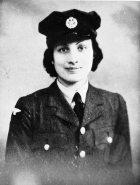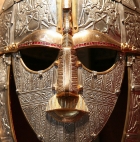Literacy
History is the closest subject to literacy. There are many opportunities between the two subjects for cross- curriculum teaching. Teaching history raises standards in literacy because there are many English based activities that are used in history lessons. History lessons require teachers and children to use their literacy skills in reading, writing and speaking and listening. Read more
Sort by:
Date (Newest first) | Title A-Z
Show:
All |
Articles |
Podcasts |
Multipage Articles
-

A classroom museum
ArticleClick to view -

A creative Egyptian project
ArticleClick to view -

An integrated literacy and history unit of work
ArticleClick to view -

Assessment and Progression without levels
ArticleClick to view -

Book for the Literacy Hour
ArticleClick to view -

Book for the Literacy Hour
ArticleClick to view -

Book for the Literacy Hour
ArticleClick to view -

Bringing an information text to life: Pets in the Blitz
ArticleClick to view -

Case Study: Creative chronological thinking
ArticleClick to view -
Case Study: Pictorial Recording
ArticleClick to view -

Children writing history: The writing spectrum
ArticleClick to view -

Creating Stories For Teaching Primary History
ArticleClick to view -

Creating the 'creative history' website
ArticleClick to view -

Creativity and history
ArticleClick to view -

Cross Curricular Project on a famous person
ArticleClick to view -

Difficult and challenging reading: Genre, text and multi-modal sources
ArticleClick to view -

Dig it: Literacy, ICT, Archaeology and History
ArticleClick to view -

Diogenes: Creativity and the Primary Curriculum
ArticleClick to view -

Drama and story telling
ArticleClick to view -

Embedding progress in historical vocabulary teaching
ArticleClick to view

